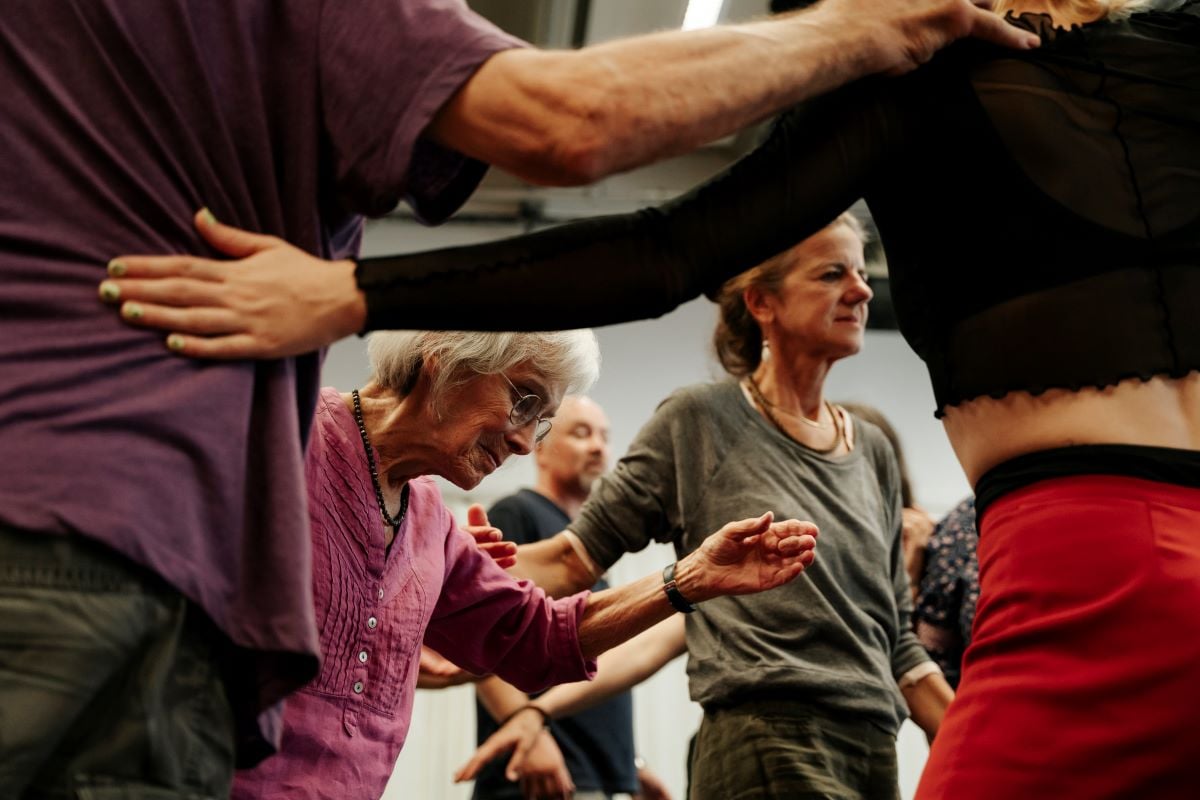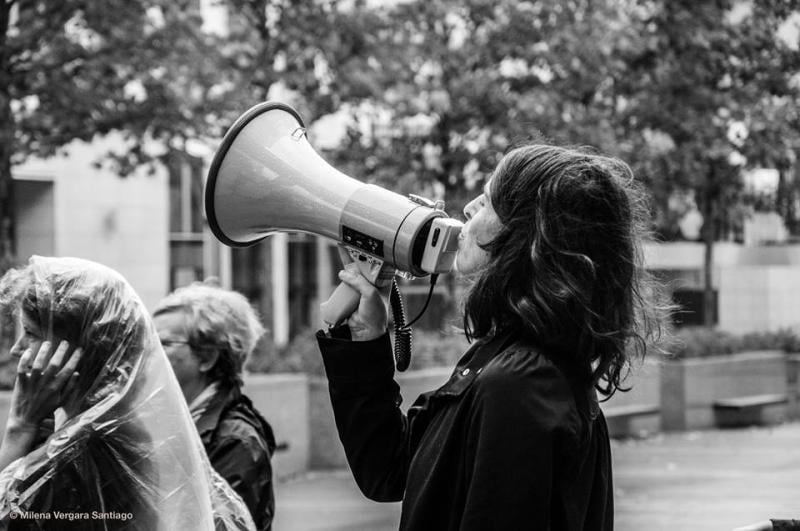
One of the MA workshops led by Lucinda Jarrett at The Place, the home of London Contemporary Dance School
Photo: Rocio Chacon
Dance as a catalyst for change?
In devising a new Master’s degree in dance, Jo Parkes’s aim has been to interrogate the artform – not as a subject to be studied – but as a form of activism.
As artist citizens, many of us ask ourselves how to respond to the extraordinary times we are living through. I currently lead a new Dance MA focusing on participation, communities and activism at London Contemporary Dance School.
In a world of increasing tension and multiple crises, students join a global community of artists and researchers working at the intersection of community dance and arts activism. In designing the course, we asked ourselves: how can we link the hyper-local work of artists engaging with communities to global discourses? How can we support, connect and amplify the practice of dance artists working for change around the world?
Community dance centres the experience of the individual and has an expertise in creating access and working with communities which has been marginalised. Arts activism centres the potential of dance for both disruption and social construction, working in partnership with actors in the social, educational and political sectors.
The collective curatorial team
To address and explore activism in dance, we have a collective curatorial team leading the course. As such, de-centralised, multi-perspective teaching is embedded in its structure. There is never one definition but many.
Dr Nora Amin, who works between Egypt and Germany, understands and practices dance activism as the ‘decolonisation of individual oppressed bodies’ through her work with Baladi dance (known in the west as Belly dance) as a way to transform trauma.
Based in Israel, Dana Yahalomi defines arts activism as the creation of an encounter which allows a shift in political awareness to emerge. With her, we research how choreographies of public space inscribe power and we practice disrupting this.
Dr Ruth Pethybridge reminds us that dancing takes place in a specific context and that each context defines what is possible. What is everyday in one country might be a cause for arrest, persecution or torture in another.
As dance artists we recognise that sometimes activism can be quiet or invisible, sensed only in the bodies of those who are present. Dr Funmi Adwole Elliot, who works between Nigeria and England, has opened up the idea of social dance as a site of resistance.
 Workshop in Berlin led by Dana Yahalomi.Photo: Milena Vergara Santiago
Workshop in Berlin led by Dana Yahalomi.Photo: Milena Vergara Santiago
Dance activism is not a topic
We don’t consider activism in dance as a topic or theme, nor is it about researching with communities affected by injustice and making a piece about it. Activism in dance is about inhabiting the world with the understanding of body and choreography that only a dance artist has.
Every live protest concerns the choreography of bodies in time and space. Each time a person co-creates movement with someone whose life experience is different, they learn more about their place in the world and how their interactions might change this context.
A key strategy is emergence: simplicity arising from complexity and complexity emerging from simplicity. One might zoom in on the detail of how a person reaches out to touch the arm of another, to see the quality of the touch and what it seeks to activate between the two people.
Then one might zoom out to understand this encounter is situated in an underfunded healthcare system. To identify where the art made, or the stories of its making, can put pressure for change on the system whose gaps it is filling.
One might train with the police in a certain locality to learn how they intervene in a protest situation; how a person becomes the physical ‘hand’ of the state. One might embody this position, to be able to interrogate with its citizens, how the state stages and enforces its power.
Challenging inherited heirarchies
Significantly, the course is also activist in the way it challenges inherited hierarchies in the institution. The collective leadership structure is one example. Another is the course’s reach to students who might not ordinarily study at the school, which we are supporting in two ways.
First, the course is structured so that teaching and learning take place through intensive residencies in London, with students embedded in the communities with which they work, exchanging with peers and teachers online. This allows them to work alongside their studies – and possible caring responsibilities. Their ages range across five decades.
Students apply their learning immediately. In the six weeks that we have been working together, this year’s cohort have applied their learning with some 150 people of all ages and abilities in Mexico, Brazil, Germany, England, Poland and South Africa.
Secondly, to lower barriers to access, we provide two full scholarships for artists living and working in the Global South and are working to develop partnerships for further scholarships.
This course would have been unimaginable before the pandemic. The online creative explorations which the pandemic demanded opened a potential which this MA seeks to build on. We are researching possibilities for international exchange without the need for air travel. In this way, we also seek to contribute to the revolution in how body-based art is made and disseminated in a climate crisis.
Jo Parkes is Course leader of the new MA Dance: Participation, Communities, Activism at London Contemporary Dance School.
![]() theplace.org.uk/
theplace.org.uk/
![]() @ThePlaceLondon
@ThePlaceLondon
Applications for MA Dance: Participation, Communities, Activism are open for September 2024.
Join the Discussion
You must be logged in to post a comment.